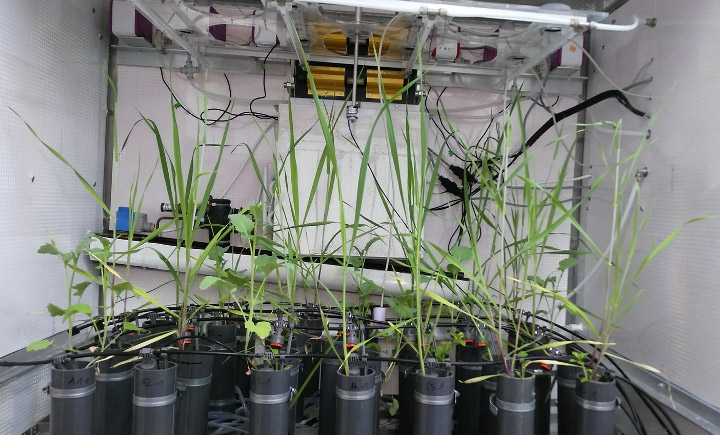#75: How roots influence climate change
Since the Holocene epoch, we benefit from a relatively stable state of the Earth system. Unfortunately, this equilibrium is increasingly threatened by humankind. Climate change and nitrogen pollution are considered risks that destabilize the Earth system. Soils play a major role in these interactions.

Soils store more carbon than found in the entire plant biomass and the Earth's atmosphere together. Therefore, they carry the potential to mitigate climate change. On the other hand, they also accelerate climate change if carbon stocks are reduced.
Furthermore, soils with a good amount of stored carbon in the form of organic matter are also qualitatively better soils for agricultural production. They can better retain water and nutrients and improve water quality in groundwater. Therefore, a higher soil organic matter content can reduce the need for mineral nitrogen fertilizers in agricultural systems, which play an important role in the nitrogen pollution that causes environmental and human health issues.
One of the most hidden parts of the terrestrial carbon cycle

It is therefore evident why researchers aim to better understand the dynamics of soil organic matter and their future response to climate change. So far, it is believed that soil organic matter is primarily determined by the root biomass of a plant and the substances that the roots release into the soil, the so-called rhizodeposits. Furthermore, the litter deposited from plant shoots add to the organic matter content of a soil.
Rhizodeposits, which are carbon-enriched compounds released from living roots to the soil, play a role in many crucial soil processes. However, it still remains one of the most hidden part of the terrestrial carbon cycle. This is partially due to the difficulty to measure it.
What oat, barley and rape release into the soil via their roots

In my master thesis, I quantified the rhizodeposition and analyzed its impact on the soil organic matter content in three different agricultural crops - namely oat, barley and rape - under controlled conditions. This allowed me to observe the carbon dynamics and to determine if these dynamics are influenced by the application of a mineral nitrogen fertilizer and/or in a possible future atmosphere with a higher CO2 content. In the 48-day-experiment carbon dynamics were traced with 13C isotopes (illustrated in green).
As expected, nitrogen fertilization and a higher CO2 level in the atmosphere led to a significant increase in above-ground biomass. However, this was not the case in below-ground biomass. This shows that the knowledge about the above-ground carbon dynamics cannot be transferred to the below-ground biomass. Therefore, it is crucial to take the roots and their exudates into account when studying climate change mitigation strategies involving soils.

Plants might feed soil microbes to get access to nitrogen
Moreover, the rhizodeposition in this experiment was considerably higher than previously expected. It would therefore be interesting to repeat the experiment under field conditions. Additionally, I observed that the samples without mineral nitrogen fertilization showed a significantly higher rhizodeposition in the shallowest soil depth (0-12 cm) compared to the fertilized samples. This supports the nitrogen mining hypothesis, which suggests that plants feed their rhizodeposition to soil microbes which access the organic nitrogen stored in the soil and make it available for the plants.
This master thesis led us to the hypothesis that there might be different rhizodeposition qualities with opposing effects on the pre-existing carbon content in the soil. Therefore, in the future it would be interesting to focus on the chemical structures of the diverse rhizodeposits.
A thorough understanding of the conditions under which carbon remains in soils is needed
Understanding the dynamics of the soil will enable us to take action to increase the carbon content of the soil with the goal of mitigating climate change, securing fertile agricultural soils and possibly reducing the need for nitrogen fertilization in certain regions.
Milena Perraudin